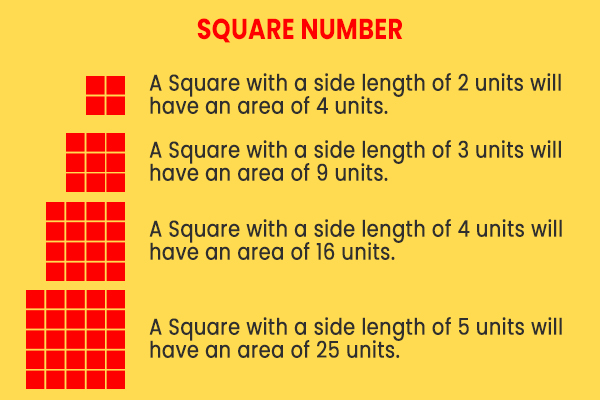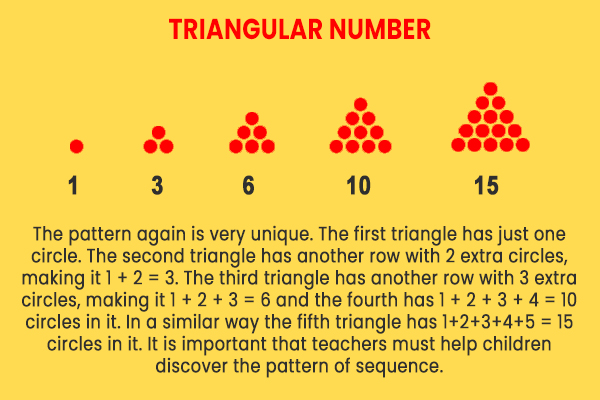Square and Triangular Number:
Making Mathematics Learning Fun
Children learn about different shapes from the pre-primary level. But learning of the shapes could be more fun if one is introduced and encouraged to find an organic linkage between shapes and number. Two such examples would include Square Number and Triangular Number, corresponding to two different geometrical shapes. We don’t intend to get into the complication of square number and triangular number (usually taught at a higher level mathematics curriculum). Rather, the note is intended to make the learning of shapes (like square and triangle) fun for the kids, studying at the elementary level.
Square Number

A square number is the result when a number has been multiplied by itself. For example, 16 is a square number because it’s 4 times 4, or 4 x 4. The name “square number” comes from the fact that these particular numbers of objects can be arranged to fill a perfect square. As squares have equal sides, calculating the area is simple – just ‘square’ (multiply by itself) one of its sides. For example, a square with side length 4 cm would have an area of 16 cm2 (as 42 = 16). In the same way, it would be easy for us to find out the side of a square if we knew the area of the square. Thus, for instance, a square with an area of 36 cm2 would have each side of 6 cm (as 62 = 36).
Some of the examples of square numbers would include 1, 4, 9, 16, 25, 36, 49, 64, 81, 100 etc. But 7 or 12 or 15 or 18 cannot be arranged to make it a square. Hence, these numbers are not square numbers. A very interesting pattern seems to emerge if one studies from one square number to the next square number: 1, 1+3 = 4, 4+5 = 9, 9+7 = 16, 16+9 = 25, 25+11 = 36, 36+ 13 = 49, 49+15 = 64. Thus, every time an odd number is added in a sequential manner to find out the next square number.
Children studying at the elementary level can be encouraged to explore square shape and to find the connection between square shapes and numbers. Children can experiment with pennies or square tiles or blocks to see what numbers of them can be arranged in a perfect square. Square numbers are particularly useful when finding the area of squares, which children begin to learn in the middle school.
Triangular Number

A triangular number is a number that can be represented by a pattern of dots arranged in an equilateral triangle with the same number of dots on each side. These numbers can be demonstrated in a sequence of 1, 3, 6, 10, 15, 21 etc. The addition of previous numbers and order of succeeding numbers results in the array of triangular numbers.
Children studying at the elementary level can be encouraged to explore the shape of triangle and to find an organic connection between triangle and triangular numbers. Children must be encouraged to explore triangular numbers and shapes with pennies or even stones. Something like the following picture could be formed by the children.
The pattern again is very unique. The first triangle has just one circle. The second triangle has another row with 2 extra circles, making it 1 + 2 = 3. The third triangle has another row with 3 extra circles, making it 1 + 2 + 3 = 6 and the fourth has 1 + 2 + 3 + 4 = 10 circles in it. In a similar way the fifth triangle has 1+2+3+4+5 = 15 circles in it. It is important that teachers must help children discover the pattern of sequence.
Conclusion
Students at the elementary level learn about different shapes. They also start learning numbers and number formation. For the kids, these shapes are concrete in nature and they spend a lot of time and energy in discovering shapes, while numbers might exist in complete abstraction. It is no surprise, then, that many students face difficulty when it comes to number. In most of the cases, students find it difficult to find the connection between concrete objects like shapes and abstract ideas like numbers. The task of the teacher, we believe, is to help children find the connection between the concrete objects and abstract numbers. This is why we encourage students at the elementary level to study shapes and find their connection with abstract numbers.
